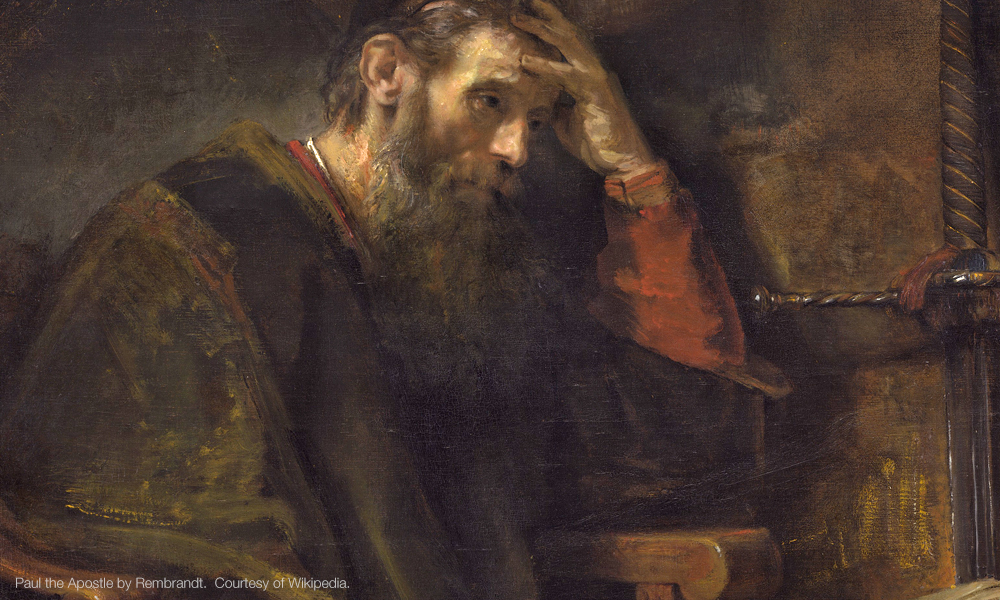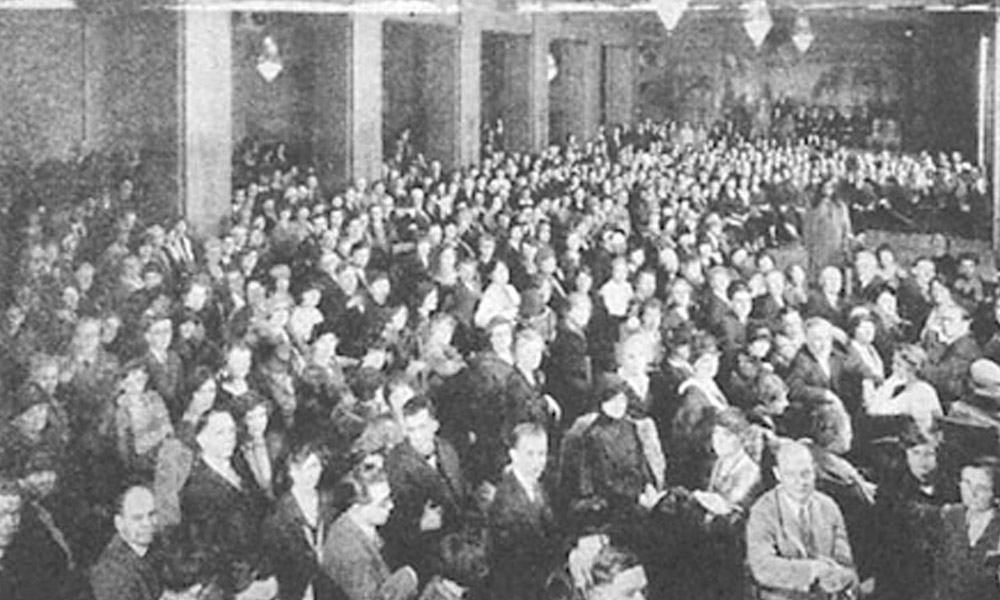
This article introduces my readers to Paramahansa Yogananda, who is often called the Father of Yoga in The West and the first superstar yogi of the twentieth century. I call Yogananda a Christo-Hindu sage and saint. The article also focuses on the two most important books written by Yogananda: Autobiography of a Yogi and The Second Coming of Christ, which I call the Bible of Christo-Hinduism. I also try to place Yogananda’s life, work and spiritual legacy within the larger context of early twentieth century America.
Introduction: A Superstar Yogi Who Really Deserves to Be Better Known
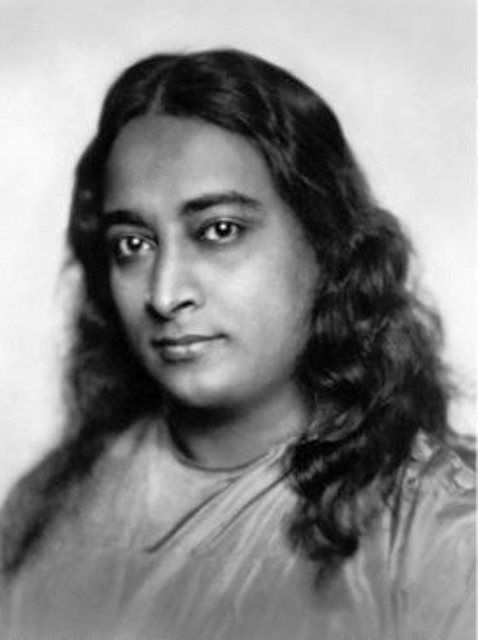
When it comes to those who brought the teachings of Yoga to the West, or those who tried to build a spiritual bridge between Hinduism and Christianity, most authorities, and even websites on the subject of Yoga and Christianity give all the credit to Swami Vivekananda, the foremost disciple of Sri Ramakrishna, who came to the United States briefly at the end of the nineteenth century to deliver his famous address at the Parliament of World Religions, and a few other speaking engagements besides. Of course, Vivekananda spoke to great praise and acclaim, and was greatly honored; he also has the distinction of being the first great Indian yogi to come to the West in the modern era. But when it comes to building a spiritual bridge between his native Hinduism and Christianity, there is an individual whose influence was far more enduring and profound, yet who usually falls under the radar of those covering the Christo-Hindu interface: Paramahansa Yogananda. Yogananda has been called one of the first modern superstar yogis, but it is amazing, considering all he did and achieved, how vastly underappreciated he is.
Whereas Vivekananda only came to America briefly, Yogananda has the distinction of being the first great Indian yoga master to live and teach in the West – in his case, on both the east coast (Boston) and west coast (Los Angeles) of the United States, which he did for over thirty years, from his first arrival in Boston in 1920 to speak at the International Congress of Religious Liberals to great acclaim, to his passing in 1952, with only a brief return trip to his native India in the mid-1930s as an interlude. During that period, Yogananda, who had already founded the Yogoda Satsanga Society to disseminate his teachings in his native India, went on to found SRF, or the Self Realization Fellowship, an organization which continues to disseminate his spiritual teachings and writings to this very day. Besides SRF, there is also the Ananda community, which is headquartered in Nevada City, up in the foothills of the Sierras in California, which was led by the late Swami Kriyananda, an original disciple of Yogananda. When one studies things and takes a deeper look, Yogananda contributed to the modern acceptance and spread of Yoga in the West in many, many ways, both obvious and subtle; he could also be considered to be one of the foremost interpreters of Yoga and Hinduism to Western audiences, if not the leading interpreter in that regard.
What Is Christo-Hinduism?
Christo-Hinduism is a term I have coined to describe a body of spiritual teachings that endeavors to build a bridge between East and West by elucidating the common ground between Hinduism, that most ancient and original of Eastern religious teachings, and Christianity, which is the dominant religion of Western civilization. Of course, many Christian missionaries have gone to the East in an attempt to find converts and spread Christianity in India and other Asian countries, but Christo-Hinduism is what resulted when the flow of religious teachings went the other way – from East to West. One of the best known examples of Christo-Hindu teachings, or the spiritual interface between Hinduism and Christianity, was when Sri Ramakrishna, who was Vivekananda’s guru, undertook the experiencing of Christianity and its savior deity, Jesus Christ, from his own Hindu perspective. Paramahansa Yogananda, in living and teaching in the West for over thirty years, realized that most of his students and disciples were coming from a Christian spiritual background, so he had to show the common ground between Christianity and his native Hinduism, and to build a spiritual bridge between the two great faiths.
Christianity and Hinduism? To the casual observer, no two religious teachings could be more different, as Christianity is basically monotheistic, whereas Hinduism has hundreds, even thousands, of gods and goddesses. But, true to the Hindu doctrine of Maya, or Cosmic Illusion, those are surface appearances only, which hide similarities that exist on a deeper level. And on this deeper level, Hinduism is actually a very Christo-friendly religion – that is, a religion with a deep spiritual affinity for Christianity. The spiritual keys to this interface or affinity lie in the doctrines or concepts of Monism, in which all lesser deities with name and form are actually particularized manifestations of a single, transcendent God of All, who is beyond all name and form; and the concept of a divine Incarnation of God, which is called an Avatar, or “One Who Descends” in Hindu terminology. In an attempt to forge common ground between his native Hinduism and Christianity, Yogananda called his own line of gurus “Yogi-Christs of modern India.”
In Hinduism, Monism is expressed mainly as the difference between Saguna Brahma, or particularized deities with qualities and attributes, and Nirguna Brahman, or the transcendent and expansive God of All or Supreme Being, who is beyond all name and form. Of course, there can be hundreds, even thousands, of particularized forms of deity in Hinduism, with a myriad of different names and forms, qualities and attributes. In Christianity, the Monistic idea is expressed mainly in terms of the Holy Trinity, or its triune conception of the Godhead, in which a single, transcendent Supreme Being manifests in three different persons: God the Father, or God Transcendent; God the Son, or God Immanent; and God the Holy Spirit, or God in Action. When viewing both Christianity and Hinduism from a Monistic perspective, the main difference between the two religions is that Christianity limits its forms or manifestations of Divinity to only three persons, whereas Hinduism starts with a Trinity – Brahma the Creator, Vishnu the Preserver, and Shiva the Destroyer or Transformer – and branches out into myriad gods and goddesses from there.
And yes – Hinduism also has its concept of a Divine Incarnation of God, or the Avatar, but the key difference between Christianity and Hinduism here is that Hinduism does not place any notions of exclusivity on divine incarnations, or any limits on how many there can be. Krishna, himself an Avatar, or Divine Incarnation of God in human form, tells his disciple and charioteer Arjuna that, whenever evil and unrighteousness are ascendant in the world, he will send a divine incarnation of himself to set things right. And down through the ages, Hinduism tells us, God has sent a number of different incarnations, or Avatars, to earth, with the most prominent ones being the nine incarnations of Vishnu, with one more yet to come. And the Avatar will take whatever form is necessary to best do the job of setting the world aright. And so, Hinduism has no problem with accepting Jesus Christ as a Divine Incarnation of God, or Avatar, and Hindus nod in sympathetic agreement at biblical passages like the Prologue to the Gospel of John, which tells how Jesus Christ, as the pre-existent Divine Word, was sent to earth as a savior.
Perhaps the main difference, in essential spiritual terms, between Christianity and Hinduism lies in the fact that Hinduism tends to be more open, tolerant and accepting, whereas Christianity, especially historically speaking, has tended to be quite zealous and exclusive in defining its doctrines and theology. In fact, until Westerners came along to limit and define it as a separate and distinct religion, Hinduism had no name for itself as a separate “ism”. Hinduism, when referring to itself, would only call itself Sanatan Dharma, which translates to something like, “The Eternal Way”. Hinduism is more of an ethnic designation than a religious one, whose literal translation could be phrased as, “the religion of those who live beyond the Indus River”. Truly, Hinduism is a “big tent” religion, which tolerates an amazing variety and diversity of schools and paths within the scope of its all-inclusive umbrella. And come to think of it, putting limitations on who can be a Divine Incarnation, or Avatar, or how many there can be, is to put limitations on God himself, who should be beyond all limitations.
The Book: Autobiography of a Yogi, a Modern Spiritual Classic
Paramahansa Yogananda is probably best known for writing his bestselling book, Autobiography of a Yogi, a modern spiritual classic that has transformed many lives, and which many have credited with bringing about their own spiritual awakening. It is said that Autobiography of a Yogi was the only book on Steve Jobs’ iPad when he died. George Harrison of the Beatles is reputed to have said that if he hadn’t read that book, he would just be another miserable person. Ravi Shankar, the great sitarist, has said that, of all the books on yoga that he has read, Yogananda’s Autobiography is something special, that it has a special magic to it. I myself was introduced to Autobiography of a Yogi when I shared an apartment with a roommate who was a follower or devotee of Yogananda and Self Realization Fellowship. He left the book lying around the apartment, and I would pick it up and read it, bobbing around it here and there, first one chapter, then another, according to chapter titles that looked interesting. I don’t think it would be an overstatement to say that there was literally at least one miracle on every page in that book. Yet Yogananda prefaces the book with the old caveat from John’s gospel: “Except ye see signs and wonders, ye will not believe.” (John 4: 48)
The Book tells the story of Yogananda’s miraculous, charmed life, and how it was intimately intertwined with his own particular lineage of yoga gurus; in the beginning, he stresses that the personal relationship between master and disciple has been at the heart of all Hindu spirituality from time immemorial. Not every chapter in the Book pertains personally to his own life; he has also included chapters on other great spiritual figures and saints he has known, as well as chapters on spiritual subjects like the science of Kriya Yoga, which was the form of yoga meditation that he taught. Below is a list of mini-synopses of some of the more amazing chapters in this remarkable book:
My Mother’s Death and the Mystical Amulet – Yogananda, as a boy, was totally attached to his loving mother, and was totally devastated by his mother’s tragic and untimely death when he was only eleven years old. His mother, as well as his father, were both devotees of Lahiri Mahasaya, a guru in Yogananda’s Kriya Yoga lineage. A stranger appeared at his mother’s door, and told her to meditate that evening, and a mystical amulet would magically appear in her hand. She gave it to Yogananda for his safe keeping, and on the day that the amulet finally disappeared – that was the day that Yogananda magically met his guru, Sri Yukteswar.
The tragic and untimely passing of his beloved mother would indelibly shape the life of Yogananda, and send him on his spiritual quest. Above all, it motivated and inspired him to be a devotee of the Divine Mother as the all-loving “Mother behind all mothers”. That was the only way he could spiritually transcend the terrible tragedy of his mother’s untimely death.
An Experience in Cosmic Consciousness – Master Mahasaya (another Mahasaya) touches the young Yogananda on his heart, sending him into ecstasy, or Cosmic Consciousness. Read Yogananda’s spellbinding description of the experience.
Two Penniless Boys in Vrindavan – Yogananda and one of his childhood companions take up the challenge offered to him by his older brother Ananta, who sends them on a trip to Vrindavan, hallowed by the memory of Lord Krishna, with nothing but two one way train tickets, challenging them to find their way back. The chapter details the miraculous and providential events that unfolded, and how the two boys made it back in style.
Manifesting a Palace in the Himalayas – This chapter tells the miraculous and improbable story of how his guru’s guru, Lahiri Mahasaya, met his own deathless guru and spiritual master, the immortal Babaji, when he was erroneously transferred to the outpost of Rhaniket in the foothills of the Himalayas. Babaji takes Lahiri back to the cave that he meditated in during his previous lifetime as Babaji’s disciple and magically manifests a beautiful palace for him in the Himalayan foothills, in order to satisfy a lingering desire that was holding him back from Self Realization and divine illumination in his current lifetime. The spiritual bond between guru and disciple, Yogananda tells us, is truly timeless, and spans the centuries as if they were nothing.
The Resurrection of Sri Yukteswar – Yogananda journeys back to India for his guru’s passing, but fails to make it in time. However, he is richly rewarded by his guru, who magically appears to him in his resurrected form in his hotel room, and tells him of the spiritual wonders of the world beyond. Now, I wasn’t there with Yogananda in his hotel room that night, so I don’t know if all this is true, but I’m giving Yogananda the benefit of the doubt.
It would be a mistake to think that Autobiography of a Yogi is a full accounting of Paramahansa Yogananda’s life; not only is such a full and abundant life as Yogananda’s almost impossible to record in its entirety, but Yogananda left out a lot of depressing or dark material, as his goal in writing the book was to uplift and inspire his readers. Not everything that he encountered in fulfilling his spiritual mission in America was a bed of roses, or a bowl of cherries, so to speak. Among the material he left out concerned organizational challenges and headaches connected with running and managing a spiritual movement, as well as the inevitable schisms, double crossing and legal challenges he faced from estranged or disgruntled former disciples, not to mention the hounding press and its penchant for yellow journalism when it came to strangely dressed yogis arriving on America’s shores. In addition, Autobiography of a Yogi is laced with a good, healthy dose of endearing humor, usually revolving around his academic struggles to pass college examinations – and how some obliging crack student colleague would step in at the last moment to give him the winning tips – God helps and works in mysterious ways, it seems. His college buddies were always calling Yogananda the “mad monk”, but his guru, Sri Yukteswar, was insistent that his disciple be a college graduate, as he knew that that would be respected in the West, even to the extent of being a prerequisite for his lecturing and missionary work.
The Second Coming of Christ: The Bible of Christo-Hinduism
One of the most arduous writing projects that Yogananda undertook while he was alive was writing a two volume set of discourses, in some thirty-six lessons, based on the teachings of Jesus Christ as recorded in the Christian gospels, entitled The Second Coming of Christ: The Resurrection of the Christ Within You. To give equal time to his native Hinduism, Yogananda also wrote a two volume set of discourses on the Bhagavad Gita, which has been called the New Testament of Hinduism. To be sure, Yogananda offers a fresh new spiritual perspective on teachings that have been haggled over by Christian pastors and theologians for centuries; it is hard to escape the feeling when one reads these discourses that what Yogananda is presenting is merely good, sound spiritual common sense – it’s like a breath of fresh air, really. At times, it also feels that Yogananda is awakening us to deep spiritual truths about the teachings of Jesus that have long been forgotten.
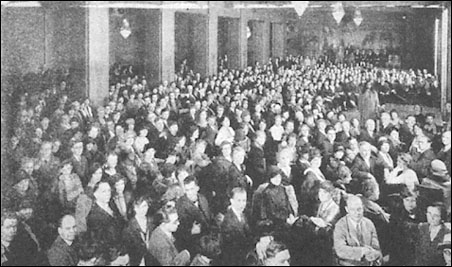
In offering the Hindu perspective on Christ and his life story, Yogananda naturally takes the position that the three wise men mentioned in the Gospel of Matthew were actually Rishis, or seer / sages from India, although the usual consensus is that they were Magi from Persia; at any rate, they came to visit the Holy Child in the manger at Bethlehem from the East. Have you ever wondered, or has any Christian pastor ever given a sermon on, how and why the wise men were able to come from the East by following a star in the East? Were they facing backwards on their camels all the way to Bethlehem as they followed that star? No, this is not a mistake – one of the wise men tells Herod in Matthew’s gospel that they have seen Christ’s star in the East. If you read The Second Coming of Christ, you will finally receive an answer to that question: What the wise men were actually following was the inner Star of the Christ Consciousness, which is a beautiful blue star that appears in the Third Eye, in the middle of the forehead, in deep states of meditation. And astrologically speaking, the forehead is ruled by Aries, the most eastern of the signs of the zodiac, which is associated with the spring equinox and the morning dawn. When biblical passages present us with an enigmatic riddle, or don’t seem to make any logical sense, that is a good clue that they provide us with the key to deeper, hidden teachings.
Did you ever wonder what Luke was really trying to get at in his narrative of the visitation scene in the beginning of his gospel, when the fetus of John the Baptist jumps for joy inside the womb of his mother Elizabeth when her cousin Mary pays her a prenatal visit after she has just been impregnated with Jesus by the power of the Holy Spirit? When he tells us that the fetus of John the Baptist jumps for joy inside Elizabeth’s womb, Luke is actually giving us a powerful hint that John and Jesus had been spiritually close to each other in previous lifetimes, as the prophet Elijah and his disciple Elisha, respectively – and now, they were to reincarnate together again as John and Jesus. When Luke wrote his gospel, the teaching of, and the belief in, the doctrine of reincarnation had not yet been banned from Christianity; that wasn’t to happen until the Second Council of Constantinople in 553 AD. And yes, Jesus himself tells it as plain as day to his disciples, right front and center in the Christian gospels, that Elijah has returned, or reincarnated, as John the Baptist. That’s the Hindu perspective, and also the perspective of the esoteric Judaism and classical Greek philosophy of Jesus and Luke’s day as well.
Christo-Hinduism – get used to the idea! And Yogananda wasn’t the only Hindu who was interested in the teachings of Jesus: Mahatma Gandhi was keenly interested in the moral and ethical teachings of Jesus, as presented in his Sermon on the Mount, as well as elsewhere in the Christian gospels; in fact, he used it to formulate his teachings on non-violence. Yogananda also tells us in Autobiography of a Yogi that his master, Sri Yukteswar, used to regularly give sermons on Jesus’ teachings from the Christian gospels, just as he would give discourses on the Bhagavad Gita. A great Avatar like Jesus comes to earth, preaches his message far and wide, and it was not intended exclusively for Christian consumption, but for all who have ears to hear, and hearts to understand, whatever their native religion may be. It just might be that Jesus and his spiritual message were bigger than any one religion – even Christianity.
Yogananda’s Mahasamadhi, or Passing: An Exit Too Soon?
Paramahansa Yogananda was born on January 5th, 1893, in Gorakhpur, India as Mukunda Lal Ghosh. His father, Bhagabhati Charan Ghosh, worked for the India National Railway – and so, the young Yogananda enjoyed the perks of free or low cost train travel throughout his native India, which would come in mighty handy for visiting pilgrimage sites. His Sun was in the tropical sign of Capricorn, a Cardinal Earth sign that is very much associated with career achievement, life path and reputation / status in life, so above all, Yogananda wanted to be a good spiritual emissary for his native India. Vedically speaking, his Leo Moon was in the Nakshatra, or Lunar Mansion, of Magha, which is centered on the Fixed Star Regulus, also called Cor Leonis, or the Heart of the Lion, which gave him a penchant for performance, dramatic flair, and a certain superstar quality about him. Yogananda was, I believe, a proud nationalist and son of India, but he also had to be discrete and diplomatic about it, I feel, because the vast majority of the period of his missionary activities in the West coincided with the long political struggle of India for independence. And while he was on his sojourn in India in the mid-thirties, he did visit Mahatma Gandhi at his ashram in Wardha in central India – that visit is chronicled in his Autobiography. And yes, Yogananda initiated Gandhi into Kriya Yoga.
A Video on Yogananda’s Mahasamadhi, courtesy of YouTube.
Yogananda arrived in the United States, in Boston, in the year 1920, when he was a young lad of only 27 years old, just before his first Saturn return – which, astrologically speaking, is the time when a young person matures and steps up to the plate to embark on his or her chosen mission in life. And Yogananda, from all the evidence available, was indeed well prepared for his mission of winning the hearts and minds of spiritually aspiring Americans and showing them the benefits and wonders of Indian yoga, and its illustrious spiritual heritage. He has been called the Father of Yoga in the West, and has been, ever since his arrival on American shores, one of the most beloved spiritual figures of modern times. Yogananda’s passing, or Mahasamadhi, which is a yogi’s last or final conscious exit from his body, came on March 7, 1952, a little less than two months before my birth. His beloved Mother India had recently won her independence from Great Britain, and the big occasion was the visit of India’s first ambassador to the United States, Binay R. Sen, to Los Angleles, to SRF headquarters, to visit Yogananda and his followers. Astrologically speaking, this correlated pretty closely with Yogananda’s second Saturn return, which everyone experiences at around age 59. And so, Yogananda’s first Saturn return – and Saturn was the ruler of his Capricorn Sun, with the Sun indicating life purpose – pretty much coincided with the inauguration of his missionary work in the West, whereas his second Saturn return pretty much coincided with its end.
Yogananda was throwing a special party for India’s new ambassador at the Biltmore Hotel in downtown Los Angeles, and he stepped up to the podium to give what would be his farewell address. Yogananda waxed eloquent about his great love for Mother India as he intoned his final words of farewell:
Where Ganges,woods, Himalayan caves and men dream of God, I am hallowed; my body touched that sod… – 1.
Yogananda frequently went into periods of mystical rapture, or Samadhi, and when he did so, he instructed his top disciples to gently chant “Om” in his ear to bring him back. But this, it turned out, was Yogananda’s Mahasamadhi, and there would be no bringing him back from the podium from which he made his last farewell address.
Yogananda had been preparing his disciples, talking to them frequently about the coming “big day”, and that he would not be with them for much longer. When his disciples would beg him not to leave, they would do so by asking him, “Who could ever take your place?” Yogananda would immediately reply, “Only Love can take my place! Be so drunk with the Love of God that you will know only God – and give that love to all.” These two words, “Only Love” became the title of a book by Sri Daya Mata (nee Faye Wright), one of Yogananda’s foremost disciples, who went on to become president of Self Realization Fellowship a couple of years after his passing. But still, it strikes me that Yogananda’s passing came way, way too soon; Yogananda had accomplished so much during his 32 year mission in the West, but just think of how much more he could have accomplished if he had stayed with us longer… It always seems like great spiritual figures like Yogananda, and Jesus of Nazareth, depart from this earth way too soon, but Yogananda chose his time for departure so he must have had his own good reasons for doing so.
In addition to his final departure from his body at his own volition, right at the end of his speech, Yogananda performed one other final miracle: According to the mortuary officials at Forest Lawn cemetery, where he was interred, Yogananda’s body remained in an incorruptible state, showing no signs of decay, for some 20 days after his passing. They had never seen anything like it in all their experience.
Yogananda’s Disciples and Spiritual Legacy
Yogananda chose the time and circumstances of his passing, so he must have had a good reason, or reasons, for departing this world when he did. And one of those reasons must have been that he felt that he had trained and prepared qualified disciples to carry on his teaching mission and spiritual work. Upon Yogananda’s passing, his top disciple, whose spiritual name was Rajarsi Janakananda (literally ‘King-Sage Janaka-bliss’, with Janaka being a legendary king of India who was also a spiritual master). Janakananda’s birth name had been James Lynn, and he was a successful business tycoon – a king of worldly business affairs – who had become Yogananda’s closest disciple; upon Yogananda’s return from his sojourn in India, Janakananda had gifted him with a hermitage and retreat overlooking the great Pacific Ocean at Encinitas, near San Diego, California, at which Yogananda spent a lot of time in solitude writing. Even to this day, the Encinitas hermitage is called “The Swami’s” by the local surfer dudes, with its golden lotus columns standing out as you drive down the Pacific Coast Highway. It is said that Yogananda and Janakananda were very close, even twin souls, so Janakananda had his own passing only a couple of years after that of his spiritual brother and guru, Paramahansa Yogananda.
Upon Janakananda’s passing, Sri Daya Mata (nee Faye Wright), who had also been one of Yogananda’s closest personal disciples, became the president and spiritual head of SRF, or Self Realization Fellowship. She remained the spiritual leader of SRF for many years. How did the young Ms. Wright find her guru, Paramahansa Yogananda? She tells us in her own words:
I was a young girl of seventeen, and life seemed to me one long empty corridor leading nowhere. An unceasing prayer to God revolved within my consciousness for Him to guide my steps to some purposeful existence in which I could seek and serve Him.
The answer to that yearning came in an instantaneous realization when in 1931 I entered the large, crowded auditorium in Salt Lake City and saw Paramahansaji standing on the platform speaking of God with an authority I had never before witnessed. I became absolutely transfixed – my breath, thoughts, time seemed suspended. A loving, grateful recognition of the blessing pouring over my being brought with it an awareness of a deep conviction rising from within me: “This man loves God as I have always longed to love Him. He knows God. Him shall I follow.” – 2.
Sri Daya Mata passed away in 2010 and the torch of the SRF leadership was taken up by Sri Mrinalini Mata. Sri Mrinalini Mata passed away in 2017, and the torch was then passed to Brother Chidananda. That’s the way it is, as original disciples of Yogananda are themselves starting to pass on. Other prominent personal disciples included Brother Anandamoy, who had quite an endearing sense of humor.
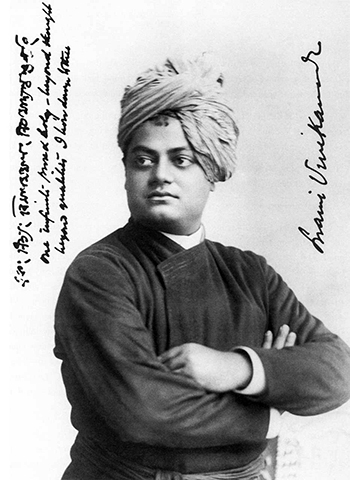
There were still other direct disciples of Paramahansa Yogananda who went off to found their own ministries and organizations. Roy Eugene Davis went off to found his Center for Spiritual Awareness in Georgia in 1972. Another prominent direct disciple of Yogananda was Swami Kriyananda (1926 – 2013), who was the founder of the Ananda communities, of which there are now some nine communities worldwide. Kriyananda (born J. Donald Walters) was the son of Christian missionaries and had been born and raised in Romania; in 1948, he hopped on a bus and traveled cross country to SRF headquarters in Los Angeles saying, “This is it!” And since then he never looked back. Kriyananda, who passed away in 2013, credits his guru, Paramahansa Yogananda, with giving him the inspiration to establish Ananda-like intentional communities everywhere, with the following words:
This day marks the birth of a new era. My spoken words are registered in the ether, in the Spirit of God, and they shall move the West. We must go on – not only those that are here, but thousands of youths must go North, South, East and West to cover the earth with little colonies, demonstrating that simplicity of living plus high thinking leads to the greatest happiness.
– Paramahansa Yogananda, Beverly Hills, California, July 1949. – 3.
Yogananda himself established several SRF temples and communities, mainly in southern California, but also in other parts of the United States; there are also SRF meditation centers worldwide. In southern California, I was privileged to visit the Pasadena Temple (now replaced by a temple in Glendale, which I have also visited); the SRF Mother Center at Mount Washington, outside downtown Los Angeles; the Lake Shrine in Pacific Palisades, California; the SRF hermitage in Encinitas; and the San Diego Temple as well. I have also visited the Ananda Community, founded by Swami Kriyananda in Nevada City, California, in the foothills of the Sierra Mountains. It might not be too much of a stretch to say that all of Yogananda’s beloved California is one big ashram or spiritual community, populated by those who came there in pursuit of their spiritual ideals, and putting them into practice. And definitely, the spiritual presence of Paramahansa Yogananda, who was in so many ways the perfect embodiment of those spiritual ideals that California represents, looms large there.
And as I finish writing this article, a catchy little tune buzzes through my mind: It’s called “Only Love”, which was written by my old roommate, brother Al, the SRF devotee.
Sources:


